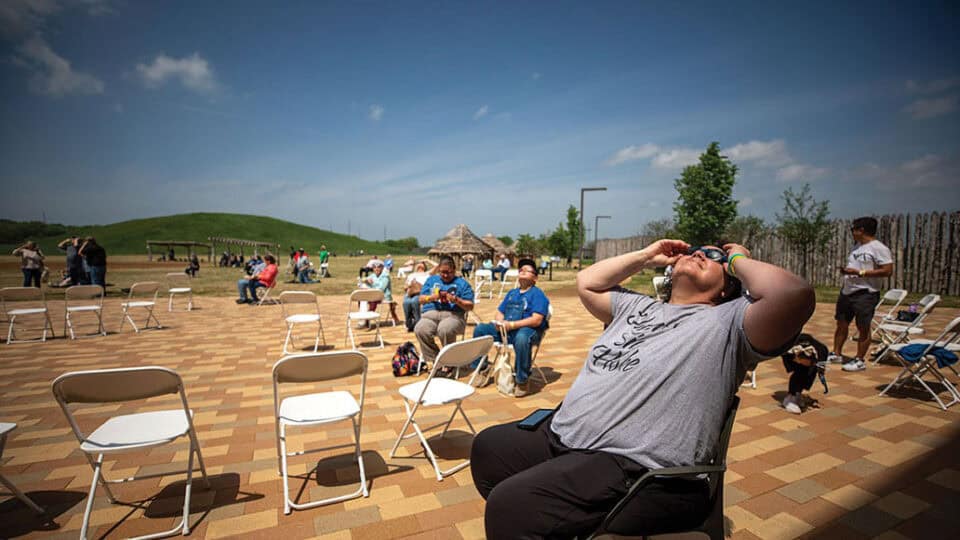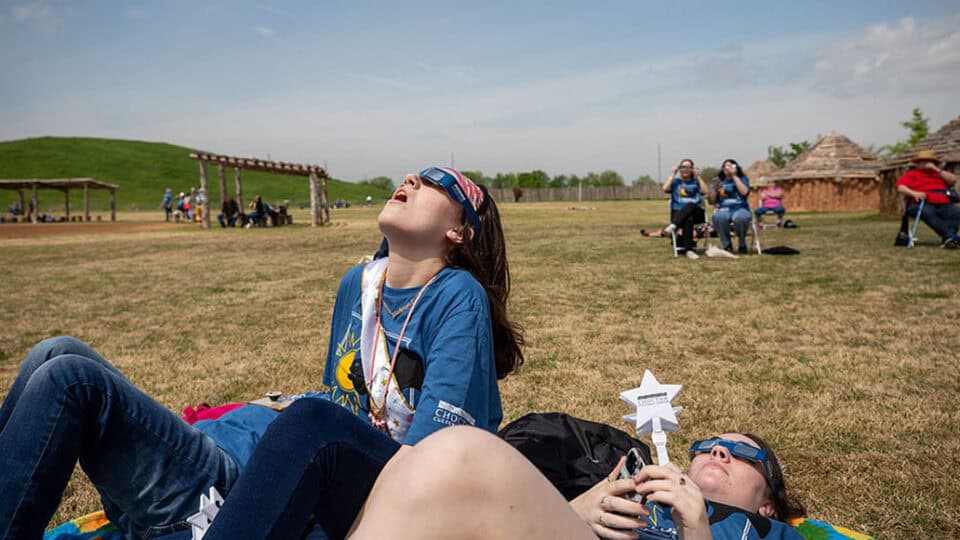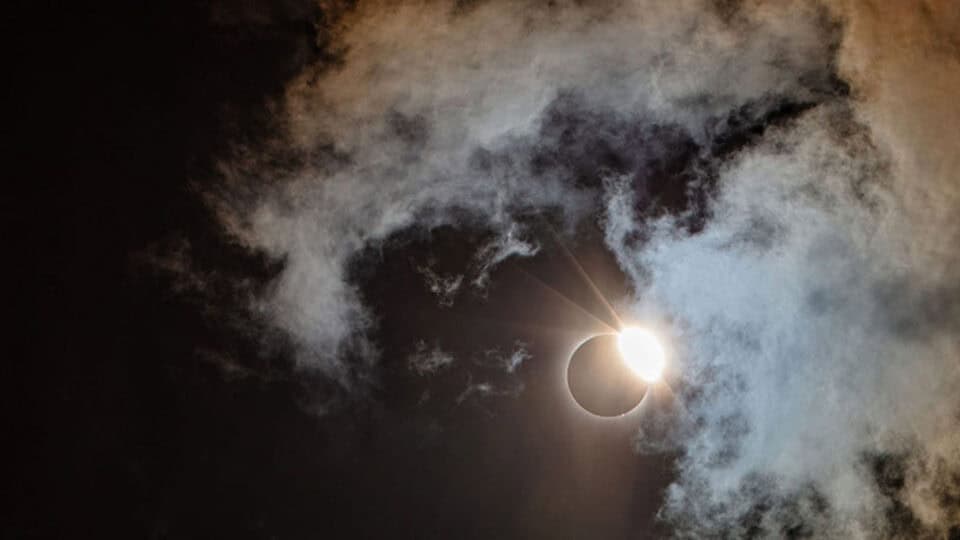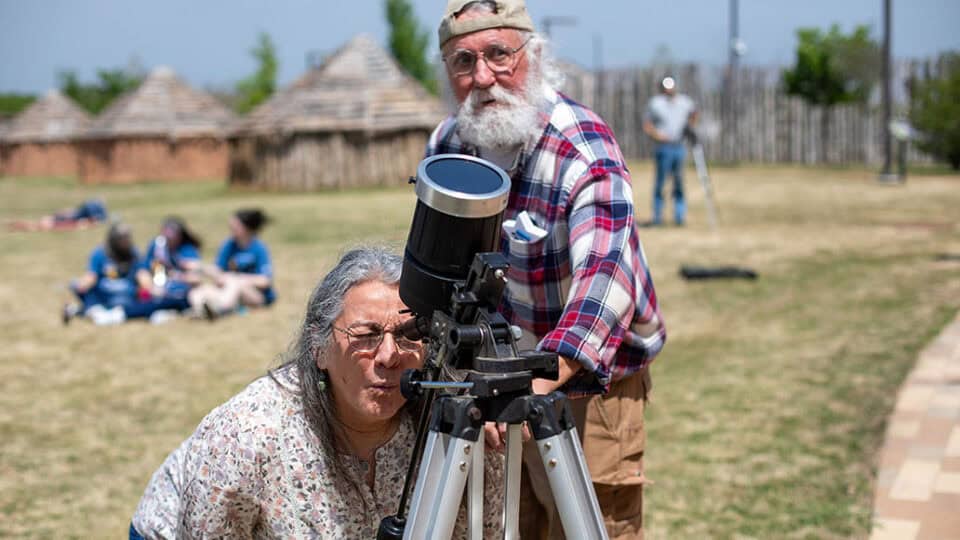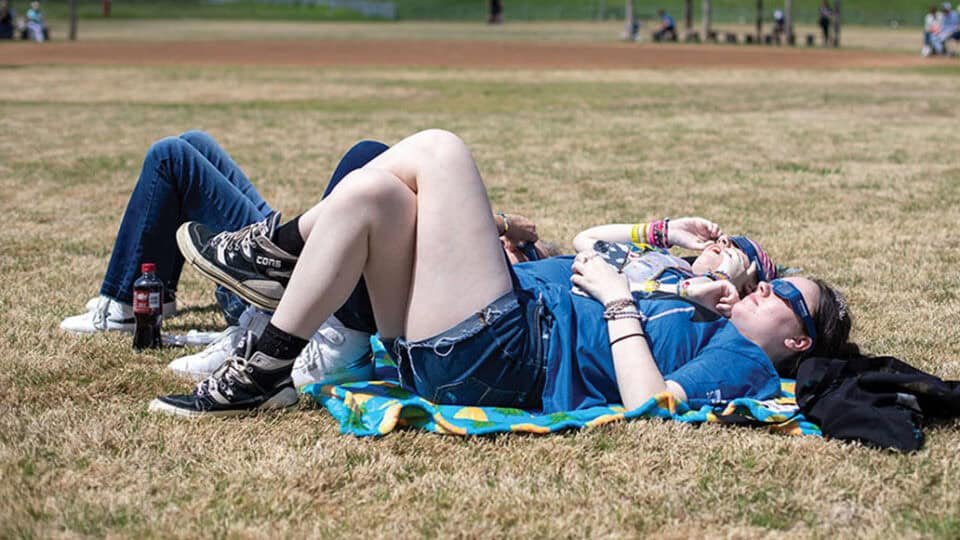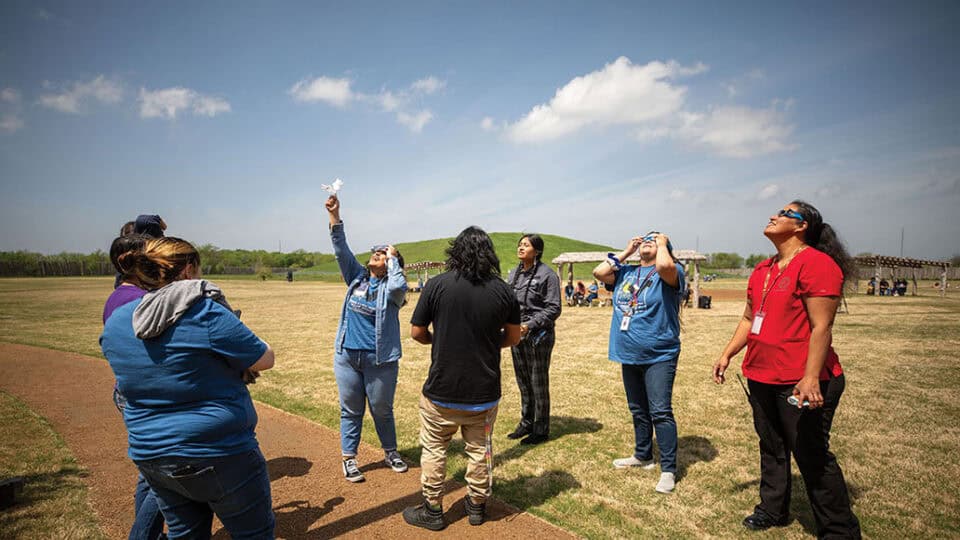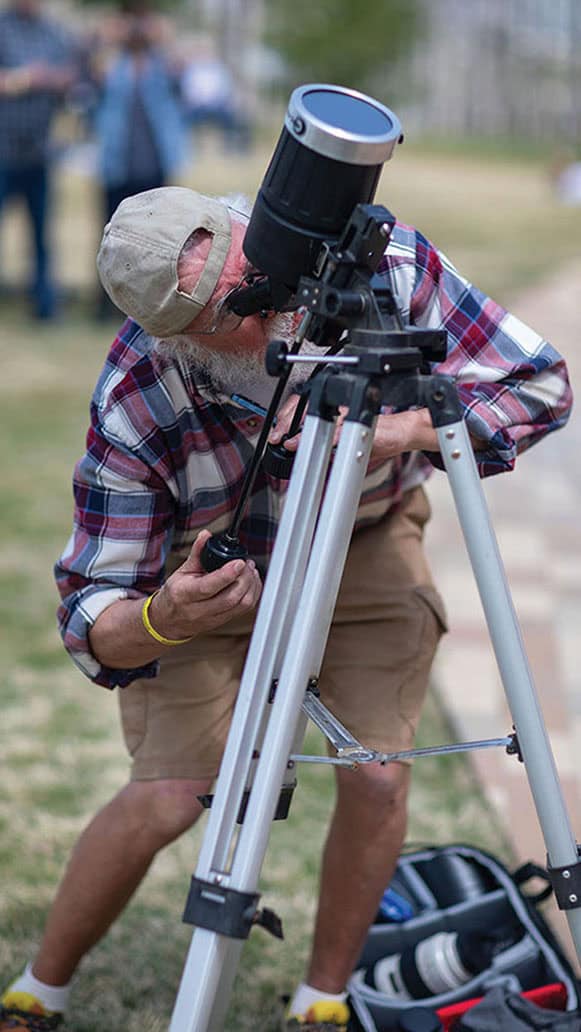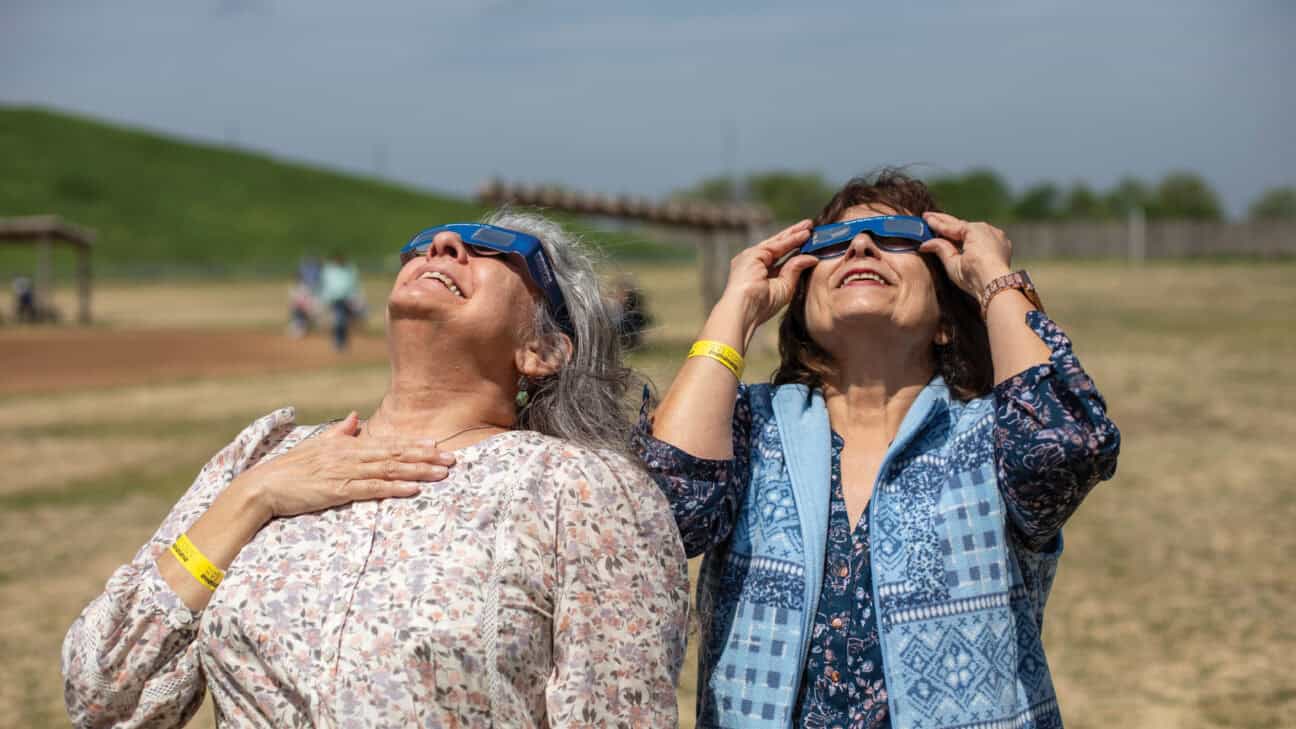
Crowds of people watch the 2024 eclipse at the Choctaw Nation Cultural Center in Durant. Hundreds of people attended eclipse watch parties across the Choctaw Nation reservation for the rare celestial event.
Total eclipse of the chukvsh
Eclipse rolls through heart of Choctaw NationPublished May 3, 2024By Christian Toews
Visitors gathered in the Choctaw Nation to observe a total solar eclipse on April 8, 2024. This rare event drew people from all over the country to the path of totality that went through the Choctaw Nation’s reservation. The Choctaw Nation hosted viewing events in several locations and invited people to participate in the Choctaw traditional activities surrounding the eclipse.
The Choctaw Cultural Center in Durant, Oklahoma and Wheelock Academy Historic Site in Garvin, Oklahoma, hosted eclipse gatherings, and hundreds of people from across the United States attended. While Garvin, Oklahoma, was in the path of totality, Durant still saw 99.7% totality during the event.
Choctaw people have been deeply connected to the environment and have passed down traditions surrounding different events for generations.
“It [the eclipse] brings us the opportunity to highlight culture in such a unique way by telling our oral stories sharing those sharing how we pass knowledge and stories from generation to generation,” said Cheyhoma Dugger, Director of Development and Membership for the Choctaw Cultural Center in an interview with CNN before the eclipse.
“We have a story specific to the solar eclipse, so we are getting to share that within our communities but with people traveling from all over the U.S. and even internationally,” said Dugger.
She refers to the story of Fvni Lusa, the black squirrel that eats the sun. Choctaw tradition says that if you make noise by yelling, hitting pots and pans or other means, you can scare away the squirrel, and the light from the sun will return.
During the events, plastic clappers and special eclipse glasses were handed out so everyone could observe and participate. As soon as the sun was covered, an uproar of yelling and clapping began. A few minutes later, the sun emerged, and Fvni Lusa was scared away until the next eclipse.
Phil and Taimi Clark traveled from Colorado to the Choctaw Cultural Center for the eclipse.
“It was as much fun as I thought it would be,” Clark said. “I loved that scaring the squirrel away from the sun; that was really fun.”
A total solar eclipse visible in the United States doesn’t happen often. The last one was in 2017 when part of the country from Oregon to South Carolina could see totality. Before 2017, the previous total solar eclipse visible in the U.S. was in 1979, when just five states were in the path of totality, according to the National Oceanic and Atmospheric Administration (NOAA).
When will the next total solar eclipse take place? According to NOAA, it will take place on August 12, 2026. This eclipse will be visible from the Arctic, eastern Greenland, northern Spain, and Iceland. If you want to see a total solar eclipse in the United States again, you will have to wait significantly longer. A total solar eclipse won’t occur in the contiguous U.S. for another 20 years in August 2044.


